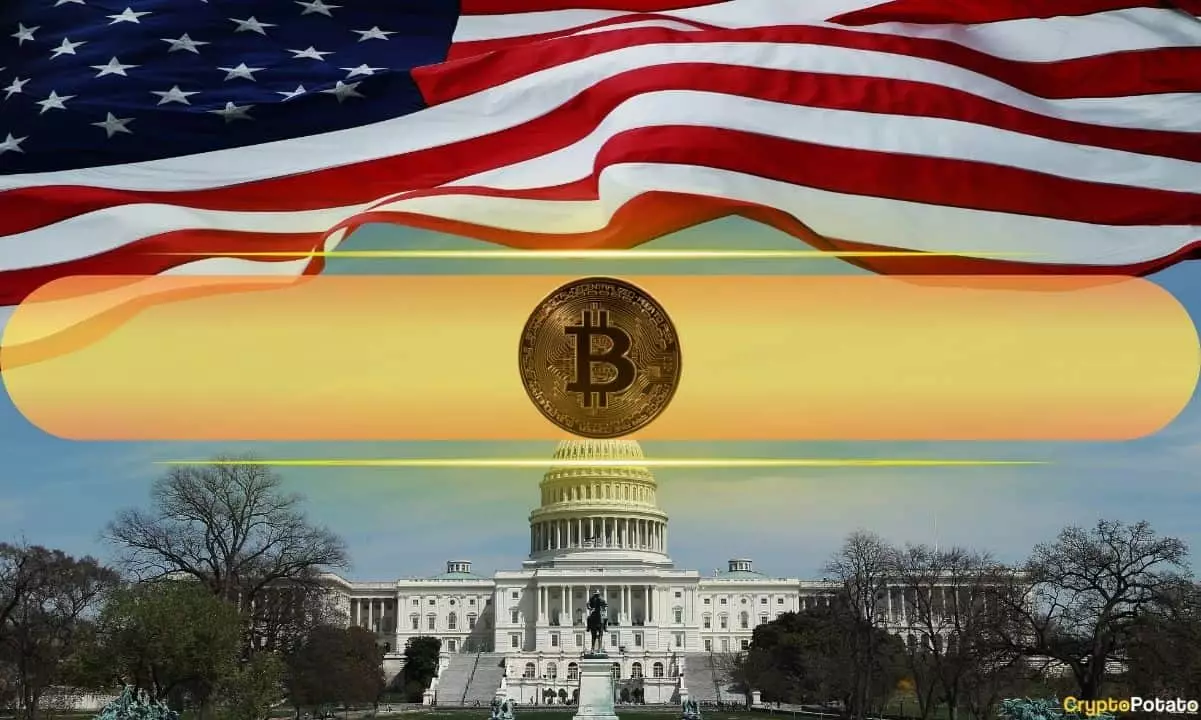In an era that increasingly reflects the interplay between technology and finance, the Trump administration’s exploration into establishing a U.S. Bitcoin Reserve presents a striking vision of fiscal innovation. The conversation, spearheaded by Bo Hines, reflects a significant shift in thinking about governmental financing and economic resiliency. It not only embodies a response to a volatile crypto landscape but also reinvigorates an age-old debate about the role of government in financial markets.
The core proposition entails leveraging unconventional revenue channels—specifically, tapping into tariff revenues and reevaluating the nation’s gold reserves. These creative pathways could theoretically facilitate the accumulation of Bitcoin without disrupting traditional budgetary constraints. It raises a quintessential question: is this a step towards modernizing an antiquated banking system, or does it veer into the perilous territory of speculative financial endeavors?
Tariffs, Gold, and the Road Ahead
Hines’ comments on funding potential underscore a broader recognition of the changing economic landscape. Tariff revenues often get dismissed as mere protective measures; however, under this innovative strategy, they emerge as vital resources for institutional Bitcoin acquisition. The idea that future tariffs could serve as non-budgetary funding for Bitcoin purchases is audacious yet exciting. Not only does it imply an adventurous readjustment in fiscal policy, but it also suggests a newfound appreciation for cryptocurrencies as a formal asset class worthy of government investments.
More fascinating, however, is the Bitcoin Act of 2025, posited by Senator Cynthia Lummis. The legislative proposal suggests a radical revision of the value assigned to gold certificates held by the U.S. Treasury. Imagine recalibrating these certificates’ valuation from antiquated levels to reflect contemporary market conditions—this shift could crystallize a revolutionary method to monetize existing yet under-utilized government assets. Such a move could yield a paper surplus that might be entirely directed toward Bitcoin, all without the need to sell any physical gold resources. It’s an imaginative fusion of traditional finance and modern digital prospects, but is the government truly equipped to navigate those waters?
A Proactive Strategy Amidst Legislative Hurdles
Central to the conversation about the Strategic Bitcoin Reserve is the acknowledgement of potential legislative obstacles. Hines candidly points out that many plans remain contingent on Congress’s willingness to act favorably. The fragmented political landscape often complicates such ambitious initiatives; tensions can stymie progress as divergent views on fiscal responsibility and government involvement in the financial sector clash. For proponents of center-right liberalism, the pressing question becomes whether to embrace innovative strategies that can potentially bolster America’s economic standing or caution against what may appear reckless in the eyes of more traditional fiscal governance.
One notably intriguing element is the notion of acquiring Bitcoin through seized assets in criminal and civil forfeiture cases. This approach suggests an appealing framework for funding a national Bitcoin initiative that imposes no additional cost burden on taxpayers. In a landscape ripe with debates over fiscal responsibility and government expenditure, this seems to present a rare opportunity to engage in potentially lucrative investments while maintaining an element of fiscal prudence.
Envisioning a National Digital Asset Ecosystem
Beyond the Bitcoin Reserve, the administration’s move to establish a comprehensive digital asset framework signifies a deliberate commitment to shaping American policy within the crypto sector. Hines frames this endeavor as crucial for addressing issues ranging from tokenization to stablecoins, recognizing the increasing urgency for clarity in a rapidly evolving financial landscape. The ambition to position America as the “crypto capital of the world” resonates deeply in the current global discourse on digital finance, and it could ultimately facilitate the shift toward a more accessible financial ecosystem.
Yet, one must remain cautious. The rush to modernize our interaction with currency through blockchain and digital assets should not dismiss the critical insights regarding market health and stability. The traditional banking system, indeed, has its flaws—delays, hidden fees, and opacity. Nevertheless, the proposed digital leap forward should prioritize consumer protection and regulatory oversight to ensure that innovation does not come at the expense of public trust. The integration of digital assets in mainstream finance could present remarkable benefits, but it could also yield unforeseen consequences without proper governance.
The ambition of these initiatives suggests an exciting chapter in U.S. financial history; however, the complexities inherent in navigating these waters require both vision and vigilance.

